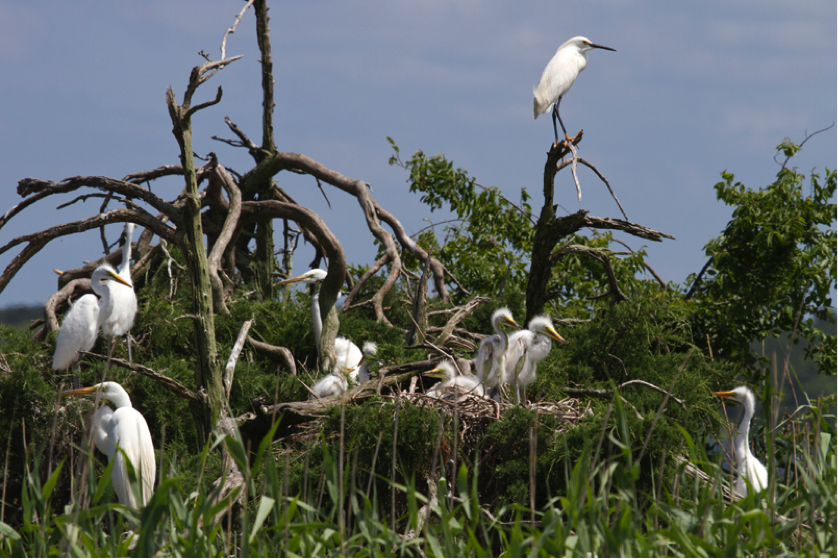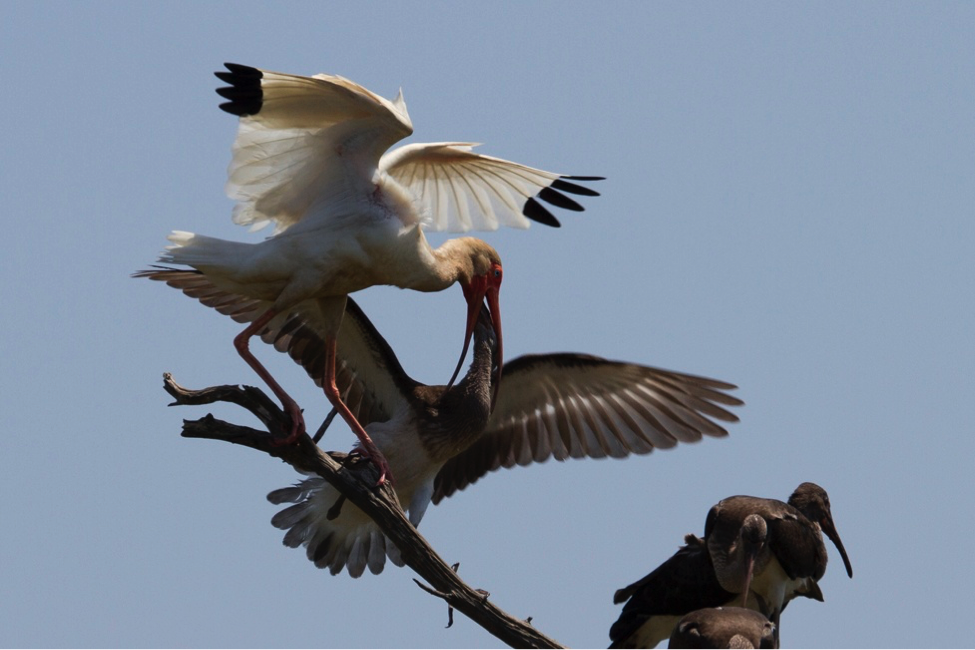For more than 25 years, Audubon North Carolina has managed a network of coastal sites along our state’s coast offering a haven for beach-nesting birds. By protecting the specialized habitats that birds need, shorebirds have a chance to thrive. Read on to learn more about nesting updates from islands along the Cape Fear River and the coastal team who protects them.
Many islands dot the Cape Fear River between its mouth and the port of Wilmington, but in any given year, just about eight or nine islands host nesting birds.
These nesting islands are on the Lower Cape Fear River, located within about 10 miles of the Atlantic Ocean providing a variety of habits from open sand to shrub and tree thickets. Without mammalian predators, they’re a safe place for over 20 species of coastal birds to raise their young, including Brown Pelicans, White Ibis and American Oystercatchers. They have been protected from human disturbance—also a deadly threat—for over 20 years by Audubon NC.

Storm Warning:
This year’s nesting season on the river is off to a great start! Tropical Storm Ana came ashore at high tide, but it did not appear to impact species like the White Ibis that nest in trees and shrubs. They simply sat tight and rode out the wind and rain.
American Oystercatchers, which nest on low shell rakes on marsh islands and along the edges of dredge spoil islands, took a hit, though. About half of their first nest attempts were lost, but in the days that followed, most pairs laid a new batch of eggs and those nests are beginning to hatch. Some lucky oystercatchers that weren’t flooded out have large chicks now.

Spreading those wings:
Speaking of hatching, every species that nests on the river is busy raising chicks now. This year’s Brown Pelican chicks made their first appearance in late May. Some later nesters are still incubating, but most adults are busy feeding chicks.
The White Ibis, meanwhile, are starting to fledge. Their brown-backed, white-bellied young are making inaugural flights from their colony on Battery Island, following their parents on foraging trips. Royal and Sandwich Terns, which nest in dense colonies on the crowns of dredge islands are also hatching. It is a good time of year to be a bird on the Cape Fear River.
Learn more about Audubon North Carolina’s conservation efforts to protect the seas and shores our birds need to thrive.



